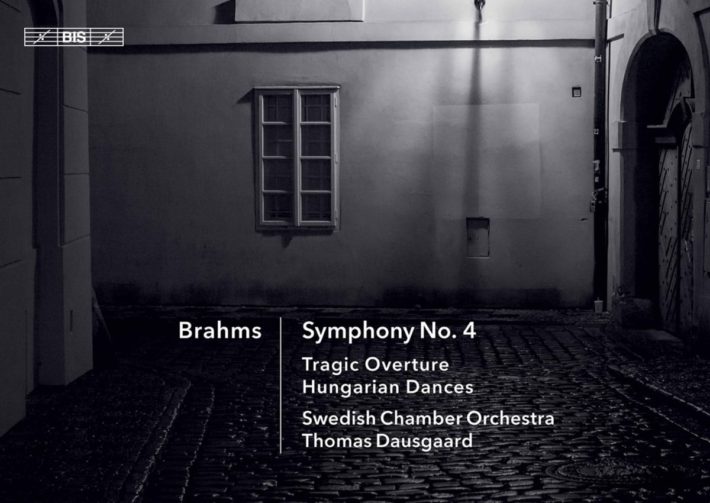This rounds up the Swedish Chamber Orchestra and Thomas Dausgaard’s Brahms Symphonies cycle, which started back at the end of 2012. The name of the game here is clarity, an added bonus to listeners who like to hear every detail, maybe while following the score.
Performing a Brahms symphony with a smaller ensemble can noticeably have less power or resonance. In giving up these elements, others can take their place, such as heightened transparency of contrapuntal lines and multifaceted textures. This is certainly true to the current version’s first movement; there is a fine balance between the many moving parts. The two-note phrases in the melody and the contrapuntal middle texture, which lends the movement a flowing quality, make us fully aware of the intricacy of Brahms’ writing. Hear how the eight-notes cello and viola figuration is continued by the woodwind. Not since Sir Charles Mackerras’ version with the Scottish Chamber Orchestra did I hear this part of the score so clearly manifested (this is helped by the clean and very focused SACD engineering). I wasn’t entirely convinced, however, by the quick and somewhat mannered accelerando when arriving at the second subject.
The second movement flows more naturally: the expansive phrases tell a story and more contrastive sections provide a dynamism that was slightly missing. There is a better cohesiveness overall, with an emotionally-charged climatic moment complemented by a smooth denouement, with a good attention paid to the harmonically rich swells just before the E major conclusion.
Related Classical Music Reviews
- Review: Brahms Complete Symphonies – Berlin staatskapelle, Daniel Barenboim
- Review: Bartók – Concerto for Orchestra, Suite No. 1 – Dausgaard
- Review – Brahms – Symphonies No. 1 and 3 – Gardner
The third movement is without a doubt the best in this version. Taking advantage of the ensemble’s economy of size, the syncopations are clear and deliberate, particularly in the lower strings. This crisp rhythm creates defined momentum and excitement. Credit is also due to the timpani’s performance, which adds body to the overall orchestral sound.
There is some hastiness at the final movement’s passacaglia; it is legato indeed, but the notes push forward into each other. For comparison, try Berglund with the Chamber Orchestra of Europe, which give a breath between each chord. I find these moments of silence crucial to the profundity of this section. I also liked Berglund and the COE’s sharper bite in the pizzicatos. Combined with just that extra millisecond of space between notes created the emphatic tone missing here.
Before a well-executed performance of the Tragic Overture Op. 81, we have a selection of 9 Hungarian Dances. On the previous releases in this cycle, Dausgaard presented the three Brahms original orchestration (dances 1, 3 and 10), while conducting his own arrangements to the rest, usually played with orchestrations by, among others, Dvořák, Hallén, Juon and Gál’s. The F-sharp minor (track 9) shows the effectiveness of Dausgaard’s work. In his orchestration, Dvořák chose to make use of a full ensemble. Dausgaard reduces the beginning to just one string and woodwind soloist against a sparse orchestral background. What we consequently have is a personal dialogue that brings with it a human quality, especially thanks to the string soloist’s supple rubato. Some of the bass notes are changed from bowed to pizzicato, which gives the work a lighter texture well-suited to the chamber orchestra.
The liner notes, concise but insightful into the compositional background of the works, are well worth the read. Navigating the limitations of a smaller-sized ensemble, Dausgaard and the Swedish Chamber Orchestra present a relatively strong performance – one that could bring more personality at certain points, but that ultimately gives us a different and intriguing look into Brahms’ orchestral works.

Brahms:
Symphony No. 4, Op. 98
Tragic Overture, Op. 81
9 Hungarian Dances (Orch. Dausgaard)
Swedish Chamber Orchestra
Thomas Dausgaard
BIS Records, Hybrid SACD BIS-2383
Recommended Comparisons
Read more classical music reviews or visit The Classic Review Amazon store
Follow Us and Comment:
Get our periodic classical music newsletter with our recent reviews, news and beginners guides.
We respect your privacy.








